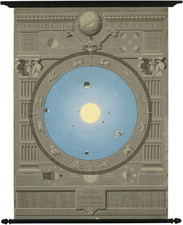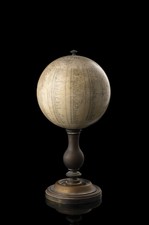Search
Camille Flammarion (1842 – 1925) was a French astronomer and author.
Camille was the brother of Ernest Flammarion (1846–1936), the founder of the Groupe Flammarion publishing house. In 1858, He was a founder and the first president of the Société astronomique de France, which originally had its own independent journal, BSAF (Bulletin de la Société astronomique de France), which was first published in 1887. In January 1895, after 13 volumes of L'Astronomie and 8 of BSAF, the two merged, making L’Astronomie its bulletin.
The so-called "Flammarion engraving" first appeared in Flammarion's 1888 edition of L’Atmosphère. In 1907, he wrote that he believed that dwellers on Mars had tried to communicate with the Earth in the past. He also believed in 1907 that a seven-tailed comet was heading toward Earth. In 1910, for the appearance of Halley's Comet, he believed the gas from the comet's tail "would impregnate [the Earth’s] atmosphere and possibly snuff out all life on the planet".
As a young man, Flammarion was exposed to two significant social movements in the western world: the thoughts and ideas of Darwin and Lamarck and the rising popularity of spiritism with spiritualist churches and organizations appearing all over Europe. He has been described as an "astronomer, mystic and storyteller" who was "obsessed by life after death, and on other worlds, and [who] seemed to see no distinction between the two.
Flammarion was influenced by Jean Reynaud (1806–1863) and his Terre et ciel (1854), which described a religious system based on the transmigration of souls believed to be reconcilable with both Christianity and pluralism. He was convinced that souls after the physical death pass from planet to planet and progressively improve at each new incarnation. In 1862 he published his first book, The Plurality of Inhabited Worlds, and was dismissed from his position at the Paris Observatory later the same year.
In Real and Imaginary Worlds (1864) and Lumen (1887), Flammarion escribes a range of exotic species, including sentient plants which combine the processes of digestion and respiration. This belief in extraterrestrial life, Flammarion combined with a religious conviction derived, not from the Catholic faith upon which he had been raised, but from the writings of Jean Reynaud and their emphasis upon the transmigration of souls. Man he considered to be a citizen of the sky, other worlds studios of human work, schools where the expanding soul progressively learns and develops, assimilating gradually the knowledge to which its aspirations tend, approaching thus evermore the end of its destiny.
His psychical studies also influenced some of his science fiction, where he would write about his beliefs in a cosmic version of metempsychosis. In Lumen, a human character meets the soul of an alien, able to cross the universe faster than light, that has been reincarnated on many different worlds, each with its own gallery of organisms and their evolutionary history. Other than that, his writing about other worlds adhered fairly closely to then current ideas in evolutionary theory and astronomy. Among other things, he believed that all planets went through more or less the same stages of development, but at different rates depending on their sizes.
Flammarion is perhaps best known at the end of the ninteenth century for his book published in 1892, where he wrote that life on Mars could not only exist but already be rife. From his observatory at Juvisy, which he built in 1882, and his observatory balloon flights, he was able to draw up a detailed Mars globe, published by the prolific Paris firm of E. Bertaux.


